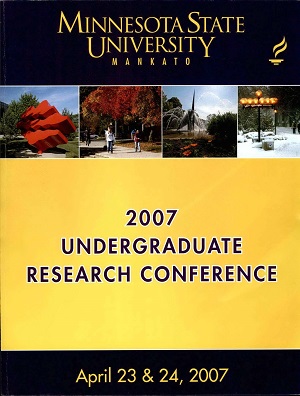Measuring Noble Gases in Coma Samples from Comet Wild 2
Location
CSU 255A/B
Start Date
23-4-2007 10:00 AM
End Date
23-4-2007 12:00 PM
Student's Major
Physics and Astronomy
Student's College
Science, Engineering and Technology
Mentor's Name
Russell Palma
Mentor's Department
Physics and Astronomy
Mentor's College
Science, Engineering and Technology
Description
Since comets are relics of the early solar system^ the formation of the solar system can be better understood through compositional analysis of cometary material. In 2004, NASA's Stardust spacecraft used a low density, silicon-based substance called aerogel to collect coma samples from comet Wild 2, which were returned to earth for analysis in 2006. Aerogel not from the spacecraft with no embedded cometary material was investigated to determine the possibility of measuring noble gases in Stardust samples. Gas evolved from heated, non-flight aerogel was measured initially using a residual gas analyzer, then a high-sensitivity mass spectrometer. The levels of helium and neon isotopes observed from both instruments were sufficiently low that noble gases from Stardust samples were measured using the same technique. Helium and neon above background was measured in flight samples containing tracks from comet particle impacts. There was no excess helium or neon measured in aerogel that had no apparent cometary material.
Measuring Noble Gases in Coma Samples from Comet Wild 2
CSU 255A/B
Since comets are relics of the early solar system^ the formation of the solar system can be better understood through compositional analysis of cometary material. In 2004, NASA's Stardust spacecraft used a low density, silicon-based substance called aerogel to collect coma samples from comet Wild 2, which were returned to earth for analysis in 2006. Aerogel not from the spacecraft with no embedded cometary material was investigated to determine the possibility of measuring noble gases in Stardust samples. Gas evolved from heated, non-flight aerogel was measured initially using a residual gas analyzer, then a high-sensitivity mass spectrometer. The levels of helium and neon isotopes observed from both instruments were sufficiently low that noble gases from Stardust samples were measured using the same technique. Helium and neon above background was measured in flight samples containing tracks from comet particle impacts. There was no excess helium or neon measured in aerogel that had no apparent cometary material.
Recommended Citation
Simones, Jacob. "Measuring Noble Gases in Coma Samples from Comet Wild 2." Undergraduate Research Symposium, Mankato, MN, April 23, 2007.
https://cornerstone.lib.mnsu.edu/urs/2007/oral-session-05/8



